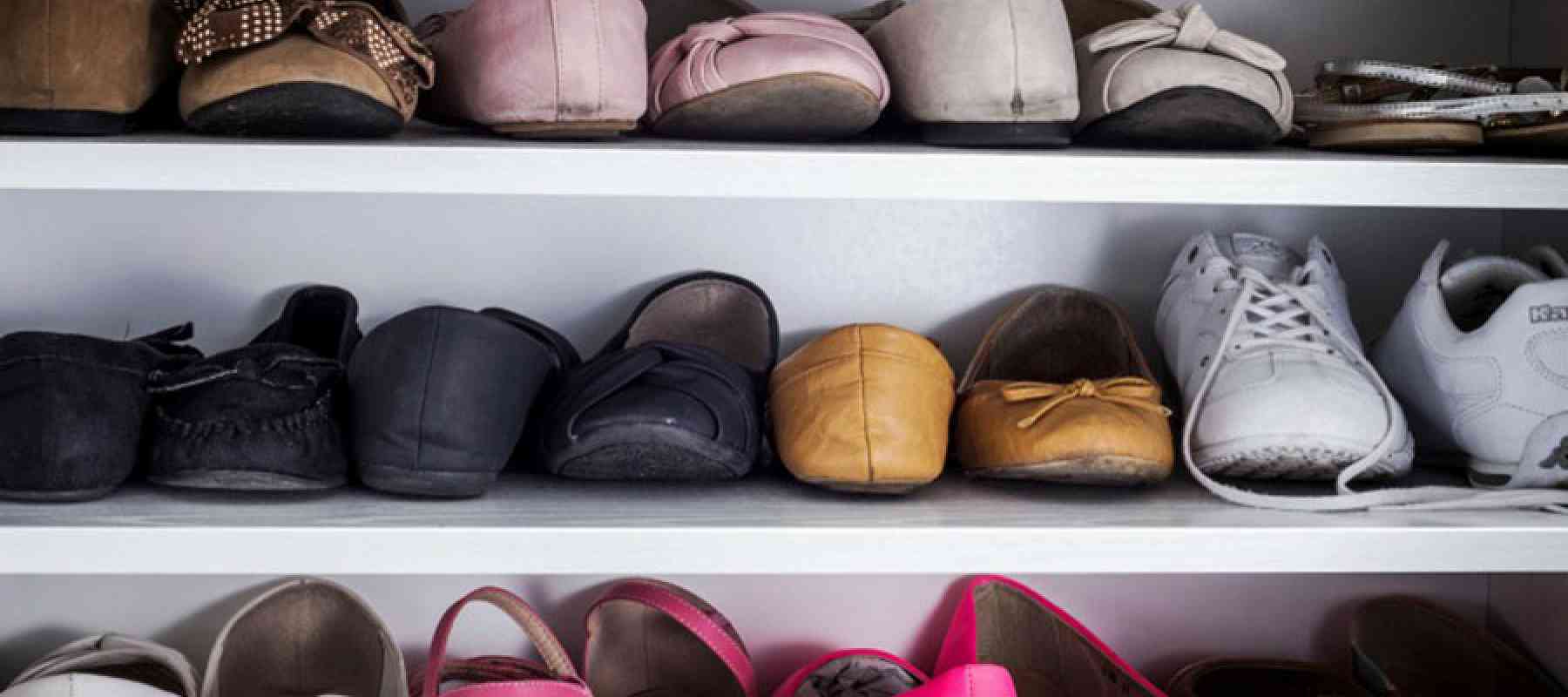Know what you have.
Different shoes need different storage. A cubby that works for sandals may not work for high heels.
Take inventory. Gather all shoes from closets, gym bags, lockers, your workplace, or by the door and grab pen and paper (or phone or laptop) to make a list.
After gathering your shoes, group them.
How you group them is your choice: by type (sandals together, boots together), color, season, or whatever suits you.
Now you can see which shoes need to be cleaned, polished or repaired. Set them aside. Take notes, so you’ll remember to make room for them in your new shoe organization system.
Prepare for a new system.
Having your shoes together, you can see which ones you no longer want.
And you can move your cubbies and racks and clean the floor.
Now, deal with your failing organization system. Repair or discard broken shoe racks. Don’t put them back, or you’ll have to live with them until the next time you decide to reorganize.
Now, make a new setup.
Now that your failing system is gone match your collection to the storage by counting shoes and measuring the space. There isn’t one correct way to organize shoes. Different shoe collections require different storage solutions. Here are some general suggestions.
Don’t obsess about a perfect display. Beautiful and ready-to-photograph is an excellent goal, but is it worth the commitment? Imagine using windowed shoe boxes. Every new pair of shoes needs a box, making your system more expensive and time-consuming. You may discard shoes sometimes, freeing a box, but are you strict about getting rid of one pair for every pair you add? If not, think of the extra time and money shopping for a new box for each new pair.
Storing shoes in their boxes protects them against dust. That’s good for shoes that you wear infrequently. It won’t work for shoes you often wear because it’s inconvenient to get them out and put them back, especially if you stack them. Label the boxes. Tape a photo of the shoes to the box, or a note, handwritten or printed with a label maker.
Use baskets, bins or buckets for sandals, flats, flip-flops or sneakers that don’t need boxes.
Floor space or stackable boot boxes are best for boots. Remember that the boxes can make it inconvenient to get the boots out and put them away.
Front and center for your most-often-worn shoes.
Measure your space before you buy boxes or racks.
Count your shoes before investing in a new storage system. Remember the notes? Use them to count kinds and pairs of shoes.
Remember: Before setting up new closet storage solutions, know what shoes you have and how much space you have. Your system doesn’t have to be perfect or complicated. There is no one correct method.
